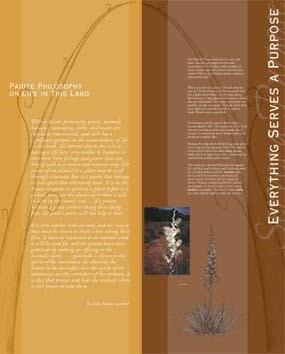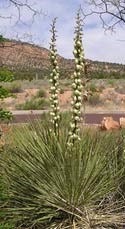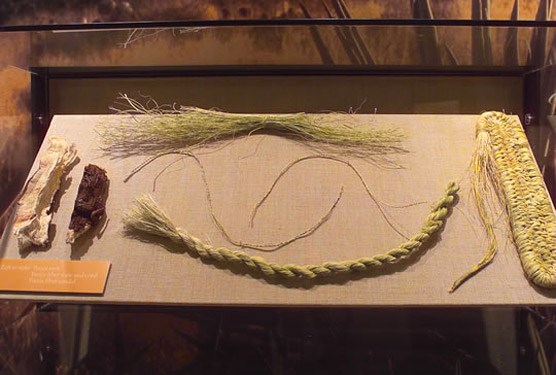
Within Paiute philosophy, plants, animals, humans, mountains, rocks, and water are viewed as intertwined, and each has a significant purpose to the connectedness of life in this land. All natural objects are seen as having a life force very similar to humans in that these have feelings and power that can help if used in a correct and reverent way. The power of an animal or a plant may be used through a human, but it is power that belongs to that spirit that ultimately heals. It is in Paiute etiquette to speak to a plant before it is picked, to ensure the plant’s spirit that it will be used in the correct way....if a person harvests a plant without doing these things first, the plant’s power will not help or heal. It is very similar with animals and the respect that must be shown to them when taking their lives. It must be explained to an animal what it will be used for, and the person must show gratitude by making an offering to the animal’s spirit….gratitude is shown to the spirits of the mountains for allowing the hunter to be successful since the spirits of the mountains are the caretakers of the animals. It is they that protect and hide the animals when it isn’t proper to take them. Kaibab Paiute member
| ||
|
Everything Serves a Purpose
| ||
|
The Kaibab Paiutes knew how to use each plant, animal and mineral in this arid environment. Their deep understanding of these resources provided them with the basic needs of life: food, clothing, shelter, medicine and spiritual aids. When you look at a yucca (Oos'eev), what do you see? To the Paiutes, Oos'eev was more than just a spiky desert plant – it was soap, shoes, fuel and rope. Depending on the season, Oos'eev also provided food. The tender young fruit was good to eat raw or roasted. The pulp of the fruit was rolled and eaten like bread or used for trade. Flowers were eaten fresh. Dead plants and dry, mature flower stalks became fuel for fires. The main part of the long tap-root was dug up and used as soap, which became a valued trade item. Smaller side roots produced a reddish dye. |

The resulting cord was fashioned into snares for catching small rodents and lizards and nets for catching rabbits and fish. Sandals made from coiled Oos¯eev twine cushioned and protected the feet from the hot sand and thorns. Women wrapped rabbit furs around long lengths of Oos'eev cord to weave warm blankets and robes. The family home, kahn, was often lashed together with Oos'eev rope. | |

| ||
Last updated: March 31, 2012
